Italian Renaissance Furniture Culture (Part 1) Chairs
The Renaissance refers to an ideological and cultural movement that emerged in various cities in Italy in the 14th century, prevailed in Europe in the 16th century, and continued until the 17th century. It brought about a period of scientific and artistic revolution, opened the prelude to modern European history, and is considered to be the dividing line between the Middle Ages and modern times. The central idea of the Renaissance is the so-called "humanism", which requires literature and art to express people's thoughts and feelings, science to seek benefits for life, and advocates individual freedom to oppose the asceticism of the Middle Ages and the religious view that the church dominates everything. As a combination of art and technology, furniture is bound to be involved in this revolution and express its attitude and determination towards this great change in a visible image. Since the emerging bourgeoisie has a lot of wealth, they pursue the enjoyment and luxury of life. These factors have prompted the furniture of the Renaissance to go against the rigidity and triviality of medieval furniture and pursue humane curves and beautiful layers, and emphasize the harmonious proportions of the front facade. In terms of shape, especially cabinet furniture, it imitates the styles of ancient Greek and Roman architecture (columns, bases, eaves and gables, etc.), making the appearance heavy and solemn, the lines rough, and the rigorous and harmonious beauty of classical architecture. The decorative themes also eliminated the religious colors of the medieval decorations and gave them more human touch.
The center of the Renaissance was Italy. Florence gained great benefits from the Crusades and became not only a prosperous wool textile and financial center, but also the birthplace of the Renaissance. The merchant nobles in various Italian cities, led by the Medici family, held the political and cultural leadership of the city. In order to show off their status and family background, they hired the top artists of the time to design and build luxurious palaces, which became a model for palaces in various European countries later.
chair
During the Renaissance, as the social activities of the nobility became more diverse and their ways of thinking changed, the box-style chairs of the Gothic era were no longer popular. Instead, they were replaced by modern light chairs based on ancient Rome, of which the most representative are the Dante chair and the Savonarola chair. It evolved from the ancient Roman archon's seat with armrests and backrests. The Dante chair got its name because the Italian poet Dante (1265-1321) liked to use this folding armchair with four S-shaped thick legs on the left and right. The surface of this chair is decorated with inlays and carvings and is widely used in public ceremonial places.
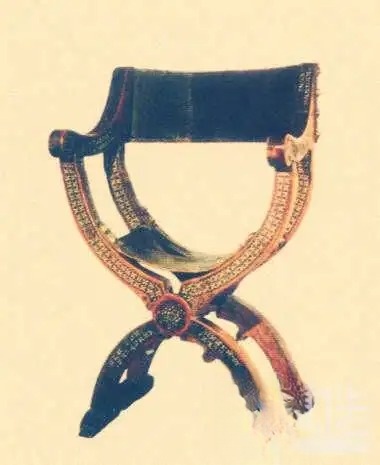
Dante Chair
The Savonarola chair is named after the famous Italian Catholic monk Girolam Savonarola (1452-1498), who liked to use this folding armchair with about 10 thin S-shaped legs on both sides. The higher seat is used for reception, meeting, preaching, etc., while the lower seat is used for dining, reading and other personal life.
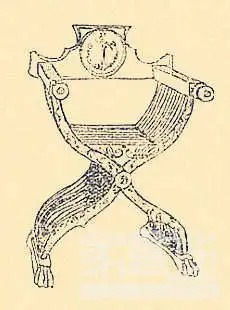
Savonarola Chair
The Sgabello chair is a lightweight armchair popular in the late 16th century. It is supported by two vase-shaped or fan-shaped carved panels at the front and back. The backrest is also made of similar carved panels. The seat is octagonal or square with a slightly concave surface. Some chairs have drawers under the seat. They are mainly placed around halls or large dining tables.
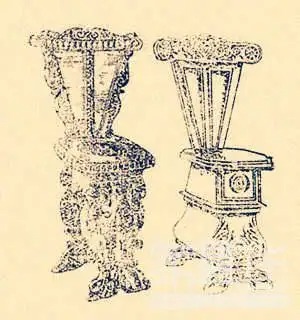
Scarbello Chair
The folding chair has a distinct Gothic style, with a straight backrest, carved backrest and armrests, and X-shaped legs under the seat. There is almost no decoration, and the structure and decoration are a bit rough. See the upper left corner of the picture below.
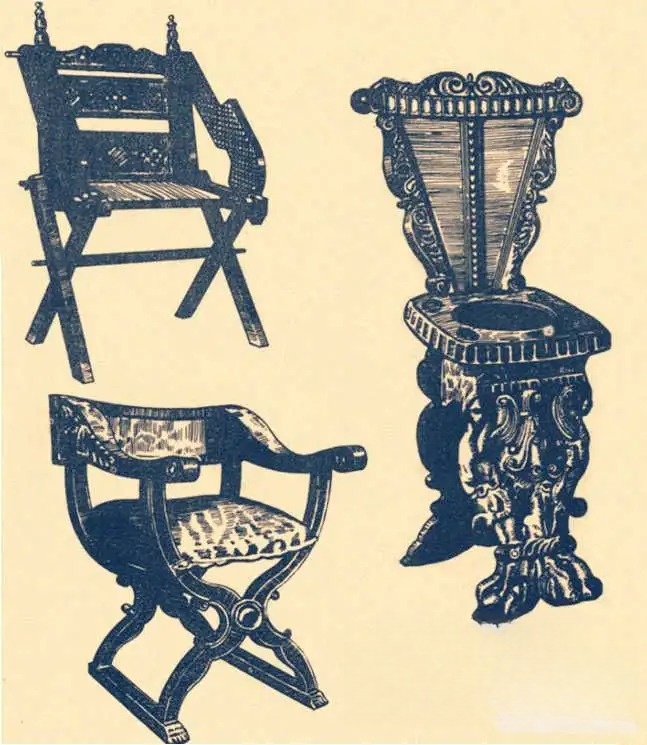
Italian Renaissance folding chairs, Dante chairs and Scarbello chairs
In the 16th century, a kind of armchair was popular in Italy. It had four straight square legs, a backrest that tilted slightly backwards, and wooden capitals or lion carvings at both ends. The backrest and the horizontal bar under the seat were often decorated with carved panels with curling patterns. The armrests were either curved or straight, supported by columns, and the curved armrests often went down to form scroll-shaped ends. See the lower left and right corners of the picture below. During this period, many chairs began to use elastic materials on the seat surface to improve their comfort. Upholsterers who cooperated with furniture carpenters appeared. They made upholstered cushions with velvet from Genoa, Italy, silk from Lyon, France, leather from Cordoba, Spain, and coarse carpets from Belgium. See the upper left corner of the picture below.
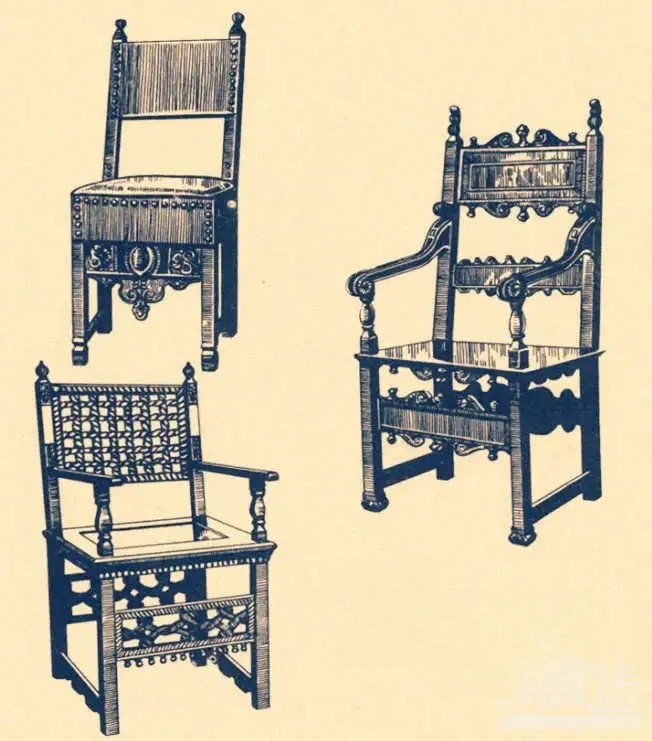
Italian Renaissance Armchair
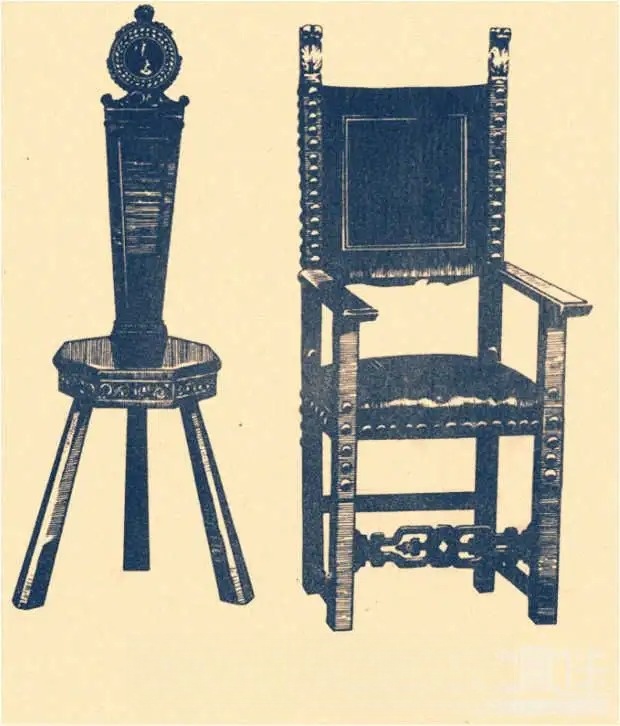
Scarbello chair and leather armchair
The Cassapanca is a cabinet-style bench, which originated from the long box of the time. It is equipped with a backrest and armrests. It has the function of storing items and sitting. It is also the prototype of the long sofa in later generations. The lower base is relatively simple, using the form of the eaves, pedestal and buttresses of the building. The buttresses on both sides are carved with patterns in the scroll pattern. The seat surface is uncarved and equipped with soft cushions to enhance the comfort. The armrests are scroll-shaped curves. This bench is usually placed on the high platform in front of the hall for receptions, symbolizing the user's wealth and authority. It is an "authoritative bench".
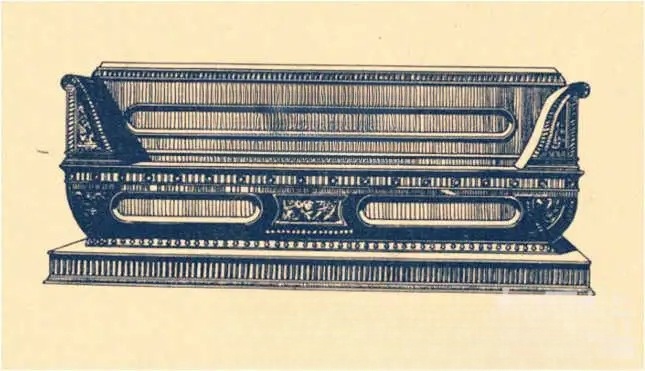
Casa Panka Bench
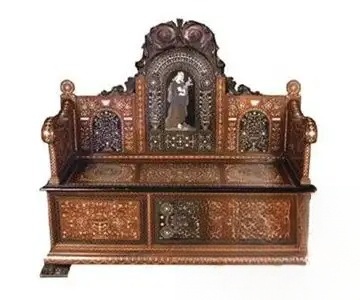
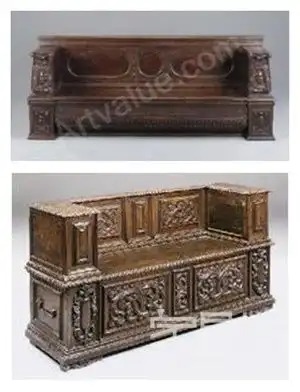
Italian Renaissance bench